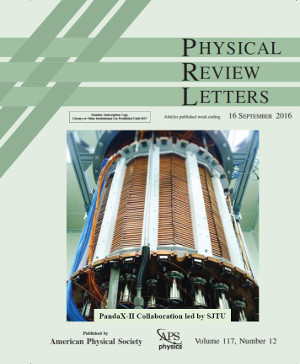Recent result from PandaX-II was published on Physical Review Letter (Phys. Rev. Lett. 119, 181302, "Editor's Suggestion") on October 30, 2017, back-to-back with the first result from XENON1T experiment. The papers are highlighted by a Physics "Viewpoint" commentary by Dan Hooper from FNAL and Univ. of Chicago, commenting that “...
You are here
News
The PandaX-II collaboration released the official WIMP search results using 54 ton-day exposure on Aug. 23, 2017. No excess events were found above the expected background. The most stringent upper limit on spin-independent WIMP-nucleon cross section was set for a WIMP mass greater than $100 GeV/c^{2}$, with the lowest exclusion at $8.6\times10^{-47} cm^{2}$ at $40 GeV/c^{2}$. The result reported here is more conservative than the preliminary result shown during the TeVPA2017 conference, due to the adoption of updated photon/electron detection efficiencies.
Prof. Xiangdong Ji of Shanghai Jiao Tong University and University of Maryland, spokesperson of the PandaX Collaboration, announced new results on the dark matter (DM) search from the PandaX-II experiment on Monday Aug. 7, during the TeV Particle Astrophysics 2017 Conference at Columbus, Ohio, the United States. No DM candidate was identified within the data from an exposure of 54 ton-day, the largest reported DM direct detection data set to date.
The future plan of the PandaX experiment
Nov 6, 2016The PandaX observatory uses xenon as target and detector to search for WIMP particles as well as neutrinoless double beta decay ($0\nu\beta\beta$) in ${}^{136}Xe$. At present, the PandaX-II experiment is in operation in CJPL-I. The future PandaX program will pursue the following three main directions:
Xiangdong Ji, Spokesperson and Project Leader of the PandaX experiment located in the China Jin-Ping underground Laboratory (CJPL), announced the first dark matter search results from the PandaX-II 500 kg liquid xenon detector in the 2016 International Identification of Dark Matter conference at Sheffield, UK in the evening of July 21, 2016 (Beijing Time). He reported that no trace of dark matter was observed with an exposure of 33,000 kg·day of liquid xenon, providing the newest constraints on the existence of dark matter.

